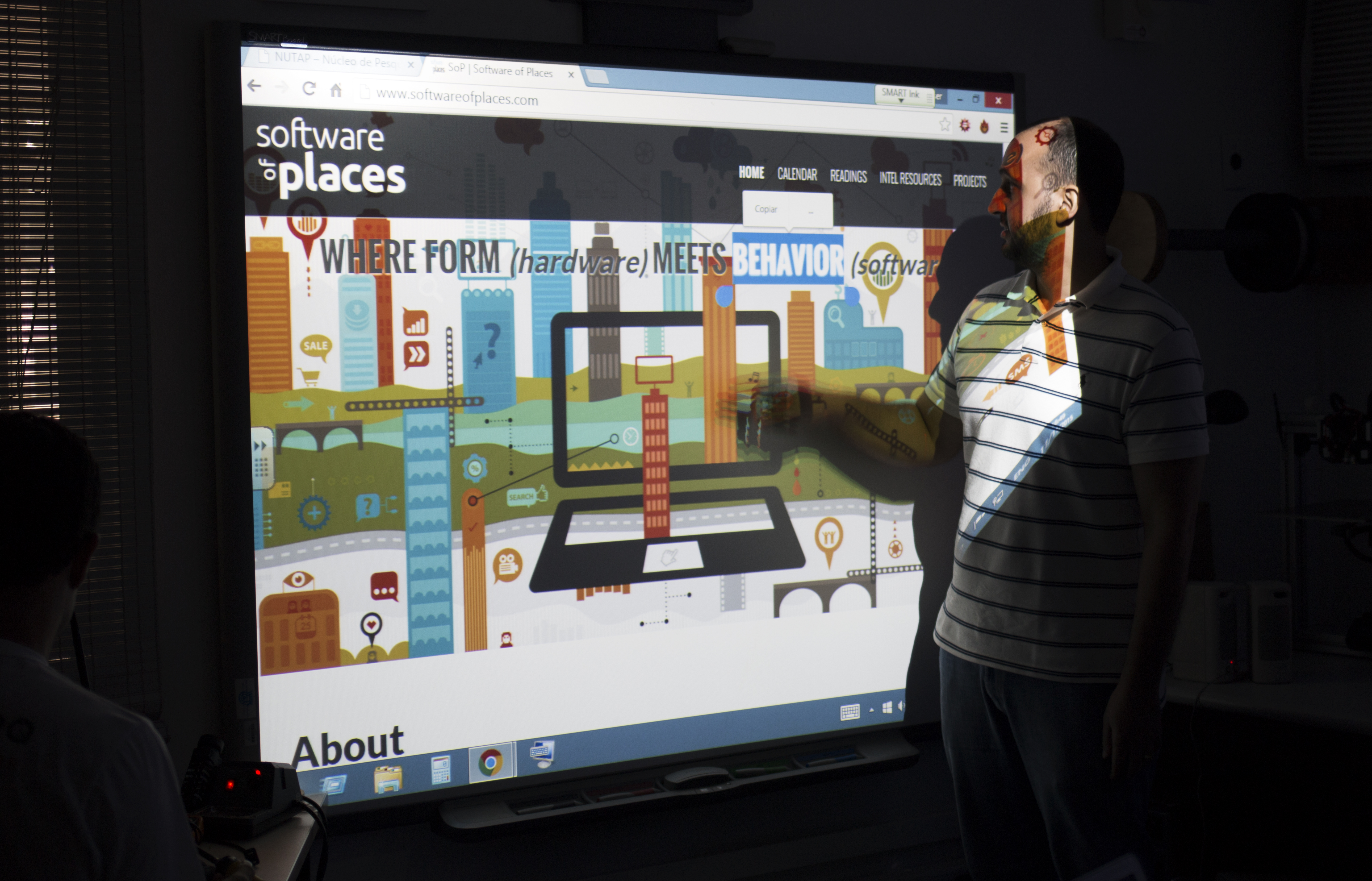SecondLab, PUC-Rio
Issue: XXIII.2 March + April 2016Page: 16
Digital Citation
Authors:
Hugo Fuks, Marcio Cunha, Bruno Chagas, Fernando Ismério, Bruno Pontes
How do you describe your lab to visitors? SecondLab is a branch of the Software Engineering Lab at PUC-Rio (Pontifical Catholic University of Rio de Janeiro) for prototyping assistive technology solutions based on software and novel hardware. Some of the research topics currently being investigated include the Internet of Things, wearables, sensing, and interacting in ubiquitous computing environments. We are concerned with applications and issues related to how these technologies can improve the lives of disabled, elderly, and convalescent persons.
 |
Trying on wearable prototypes. |
What is a unique feature of your lab? SecondLab is an encouraging place for exploring computing beyond traditional desktop computers, targeting screenless devices and multimodal interface solutions. Our focus combines a strong prototyping approach with participatory design (at least we try doing it). We think our unique feature is using this mindset to approach real-world problems. Based on this approach, we created novel concepts such as Beauty Technology and Hairware.
 |
Teaching a 'software of places' class. |
How many people are in the lab, and what is the mix of backgrounds and roles? Currently there are five computing researchers working at the lab daily, but a larger group uses our space when the lab is used for teaching. We regularly interact with researchers from other departments on specific projects, such as when we worked closely with an industrial designer to prototype wearables to encourage body movement in cognitively impaired persons in a therapeutic environment. Everybody is responsible for keeping the space organized. Once in a while, a task force is assembled to ensure a minimum level of cleanliness and organization and to recycle used components and materials.
Briefly describe a day in the life of your lab. Usually loads of sharing takes place, as we exchange information on scientific papers, technological innovations, and media announcements that cross our topics of research. This alternates with quiet moments when everyone concentrates on demanding tasks that vary from building and debugging programs and circuitry to writing scientific papers and projects for publications and funding opportunities. Usually there is a lot of talking, with jokes sparking up here and there throughout the day.
The most important aspect of our work is addressing the needs of disabled, elderly, and convalescent persons—real assistive technology needs.
What is one feature of your lab that you could not do without? A 3D printer for printing cases for our prototypes.
 |
Testing circuitry. |
What is one feature of your lab you want and do not have? A nano printer.
How would you describe how people interact in your lab? Interaction in our lab is completely informal. Even on individual projects, it is rare for someone to work alone: We usually brainstorm and discuss ideas, test and assess each other's projects, and share equipment, skills, and knowledge. As the lab is also used to teach courses in the "software of places" discipline, there is a biannual influx of new grad students. It is interesting to have them sharing our space, oxygenating our environment by bringing different perspectives on the stuff we do.
What is the one thing you see as most important about the work you do there? The most important aspect of our work is addressing the needs of disabled, elderly, and convalescent persons—real assistive technology needs. We do this by adapting and applying state-of-the-art concepts and technologies to develop creative solutions based on low-cost implementations that are within the scope of our resources.
http://nutap.les.inf.puc-rio.br
Copyright held by authors
The Digital Library is published by the Association for Computing Machinery. Copyright © 2016 ACM, Inc.



